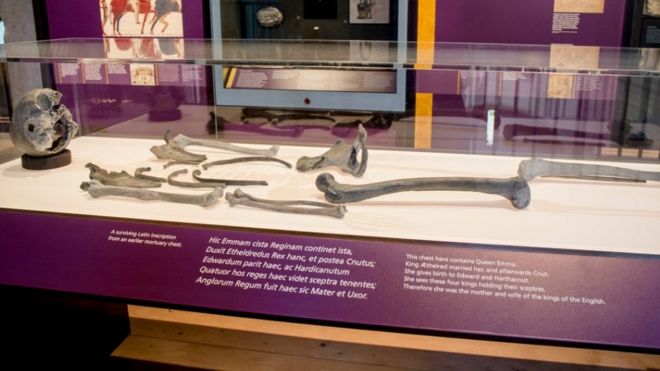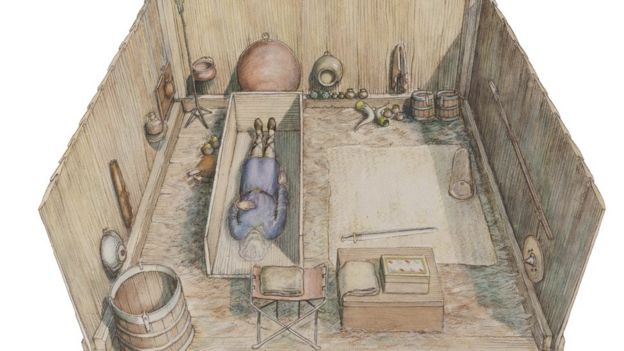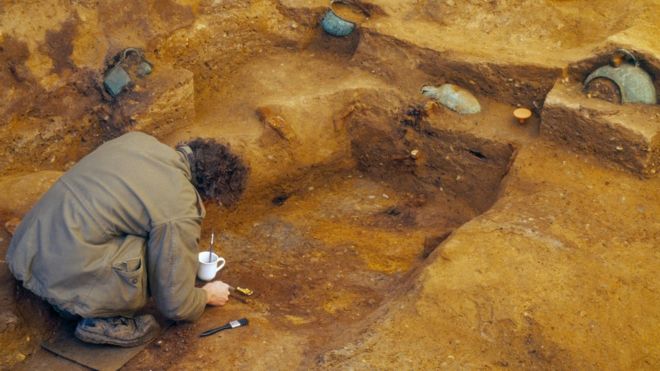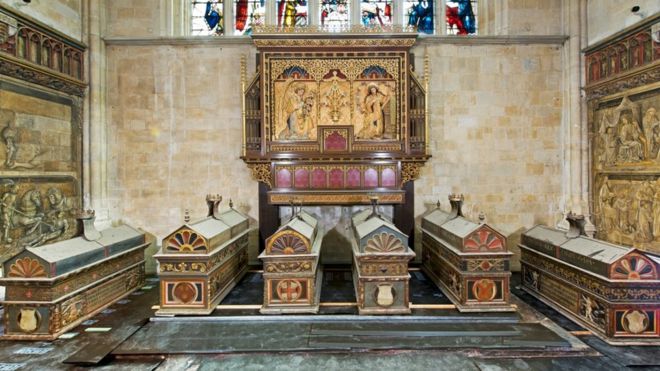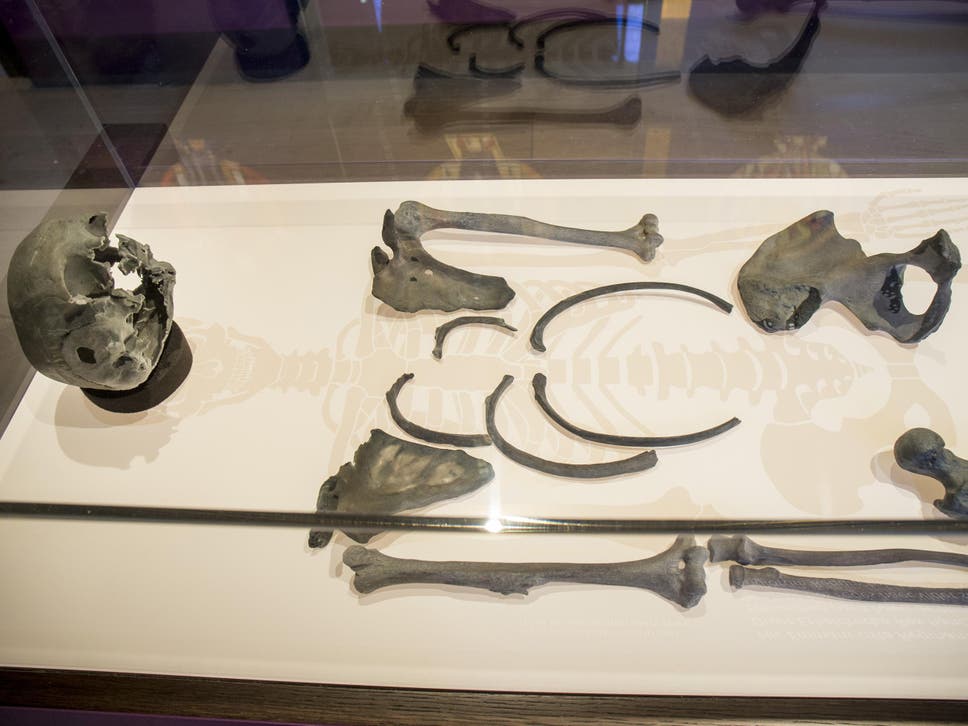A reconstruction of Queen Emma's bones is on display but her skull is not completely intact making it too difficult to create a 3D model of her
Image copyright WINCHESTER CATHEDRAL
For centuries bones believed to be the remains of Anglo-Saxon and early Norman rulers and bishops have been kept in mortuary chests in Winchester Cathedral.
Over the years the skeletal remains have been mixed up and moved around, resulting in some confusion over whose they are.
Fresh research has now dated the contents of the chests and established that the only bones from a mature female are likely to be those of Queen Emma of Normandy.
But that is only the first piece in a puzzle researchers from the University of Bristol are now trying to solve.
They will use DNA extracted from the bones to try to establish the identity of the other 22 people whose remains were in the wooden caskets.
Read the rest of this article...
